The Mystery of the Marine Iguanas of the Galapagos
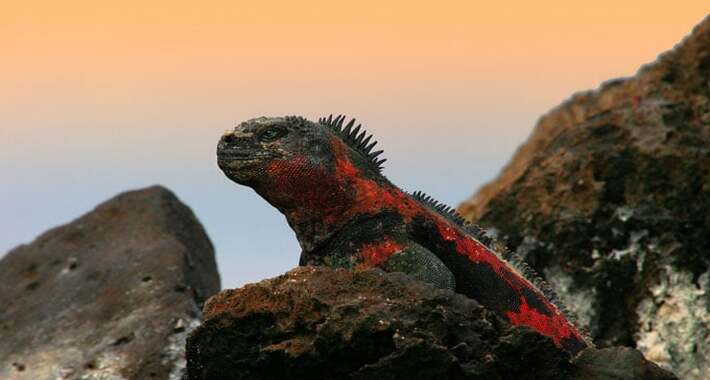
The Galapagos marine iguanas were unintentionally overlooked by Charles Darwin during his visit to the islands, despite the fact that they were “hideous-looking…most disgusting, clumsy lizards.” Nonetheless, these microscopic aquatic dragons exhibit remarkable evolutionary traits and have remarkable environmental adaptations.
Overall summary
It is estimated that the earliest iguanas reached the Galapagos Islands several million years ago—possibly as long as 10.5 million—via logs or debris piles carried by ocean currents. Since then, it has given rise to other distinct species, with the iguana today holding a significant position among the island’s fauna. The Galapagos marine iguana is a single species, although as is common in this archipelago, it has seven documented subspecies and varies somewhat in size and color throughout the islands. The easiest way for visitors to distinguish between subspecies when touring the islands is by color. For instance, the subspecies called Christmas iguanas, which are mostly green on Santiago, are regarded to be the most colorful on Española Island, where they are mostly turquoise and red. Punta Vicente Roca is another place where marine iguanas are frequently seen.
See up close the recognizable Galapagos Marine Iguana!

One of the islands’ native animals is the Galapagos marine iguana
More precisely, the wide-set eyes, flattened tail, salt-encrusted skulls, and square, flat snout of Galapagos marine iguanas make them immediately distinguishable from land iguanas. Males may reach lengths of over four feet and have bigger bodies than females, with the tendency to be significantly brighter. In addition to being somewhat longer along the spines, the Christmas iguanas’ (especially) coloration intensifies greatly during the mating season.
Current changes pertaining to marine iguanas in the Galapagos
Experts on the islands have recently noticed that during exceptionally strong El Niño occurrences, iguanas have been known to survive by eating grasshoppers, crustaceans, and terrestrial flora. The process of evolution is ongoing, and it seems that the lizards are changing how they behave to endure difficult circumstances.
The only seagoing lizard in the world
The marine iguana diverged from its progenitor around 5.7 million years ago, giving it ample time to develop the characteristics that set it apart from all other lizards on the planet. The marine iguana changed in order to better take use of the readily available and plentiful food supply on the ocean floor. It moves beneath the ocean’s surface to feed on the algae that grows on the rocks by using its flattened tail as a rudder. By using its flat snout and strong teeth, the lizard removes algae off surfaces by using its lengthy claws to hold onto pebbles on the ocean floor. Despite the fact that most of their dives last no more than five or ten minutes, these lizards have adapted so effectively to their marine habitat that they may stay underwater for as long as an hour.
It’s amazing how the Galapagos marine iguana has adapted to survive in the chilly, salinized seas where it feeds, in addition to being an exceptional swimmer. As they lack the ability to thermoregulate their body temperature, iguanas, like other reptiles, are cold-blooded. The iguanas may lose up to 10°C when they are feeding, therefore before going into the water, they must sit in the sun to bring their body temperature to 36°C. They can thus absorb more sunlight thanks to their dark pigmentation, which is essential to their health. They have, however, evolved a fascinating system to expel salt from their body as a result of consuming a lot of salt in their diet.
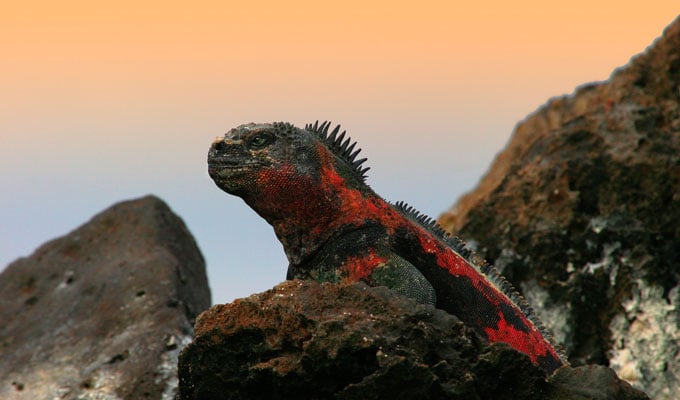
Laws in Ecuador protect marine iguanas, as do all indigenous species in the Galapagos islands
Additionally, Galapagos marine iguanas have developed an incredibly unusual resistance to starvation. Every few years, the main food source for iguanas, algae, dies off in enormous amounts owing to rising ocean temperatures caused by the El Niño climatic oscillation, which has a significant impact on the climate and ecosystems of the Galapagos. The iguanas suffer greatly as a result, yet in a rather surprising move, their bodies shrink in response, using less energy as they get smaller until food supplies increase. No other example of an adult vertebrate shrinking—especially one that occurs repeatedly—is known to exist in the globe. According to scientists, the iguana really eats its bones in order to survive, leaving it with a smaller skeleton.
RELATED STORIES
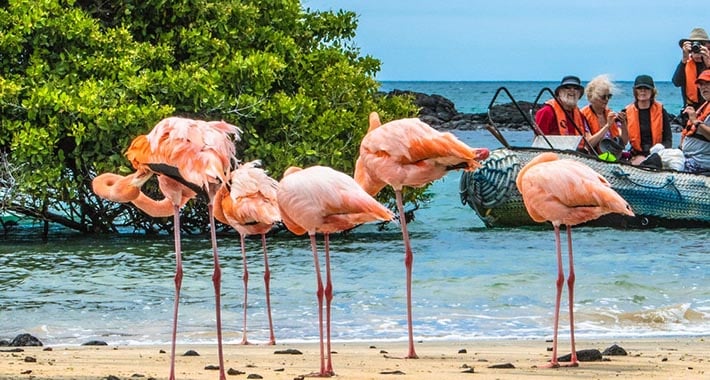
What are the best birds to see in the Galapagos?
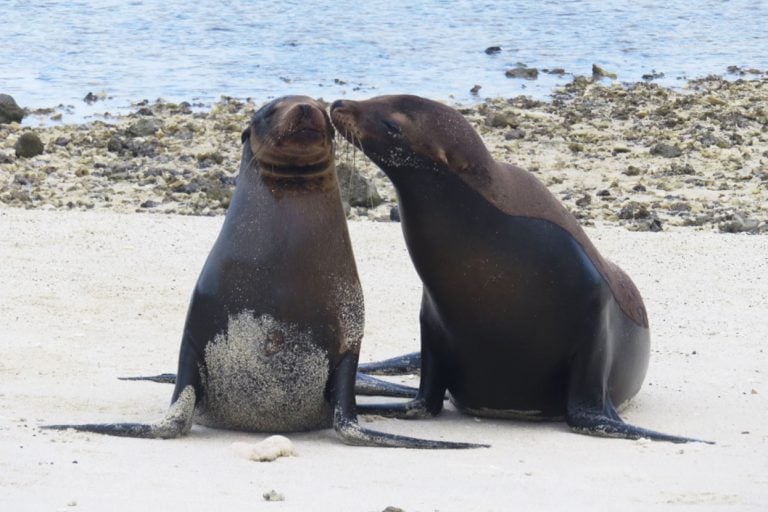
Six Stunning Ways Galapagos Island Animal Mothers Nurture Their Young

Guy Fawkes on the Galapagos Islands: Never forget the November “Finch”…
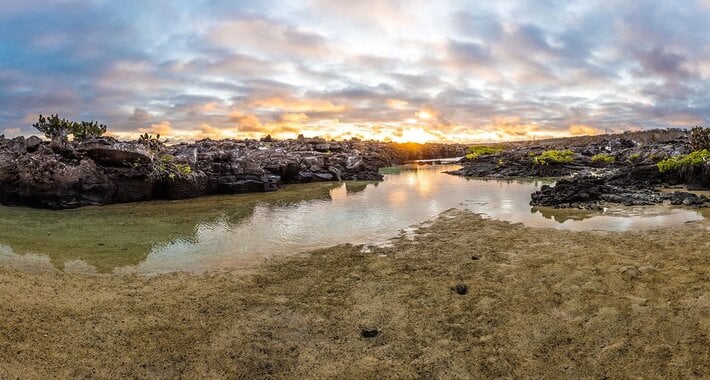
A Unique 6-Day Insular Inspiration Session with Charles Darwin on Santiago Island!
